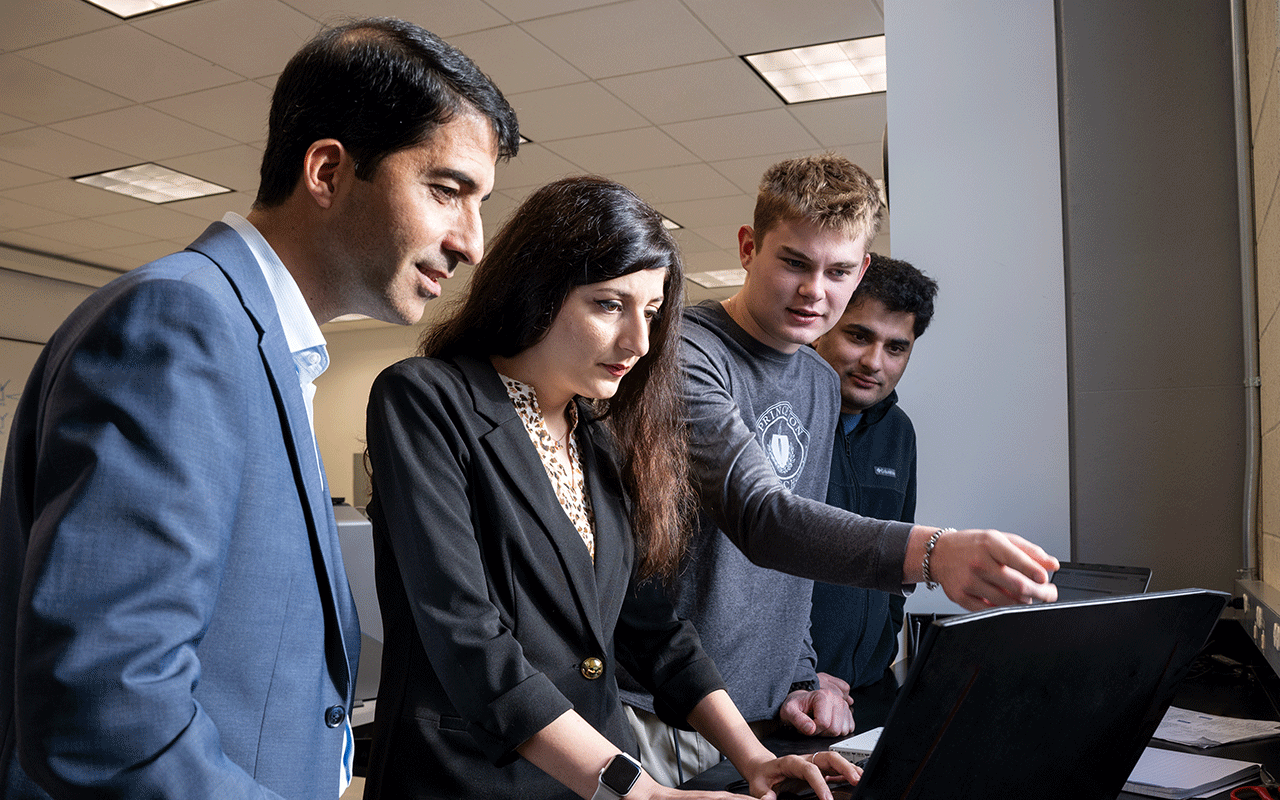Mixed Signals
Engineering professor uses artificial intelligence to curb cellphone interference
By Andrew Faught

It’s a frustration experienced by cellphone users the world over: calls that range from muddy to incomprehensible or, at worst, cut out entirely. The decades-long inconveniences are due to a shortage of bandwidth, which restricts the amount of information a cellular network can transmit at any given moment.
“Frequency is a limited resource, which is why we reuse frequencies in cellular networks,” explains Mojtaba Vaezi, PhD, associate professor in the Department of Electrical and Computer Engineering. “As a result, signals coming from the same frequency collide, and then it’s not possible to understand what people are saying.”
Dr. Vaezi, who runs the Wireless Networking Laboratory at Villanova, is leading a project that could change the way cellular networks operate, significantly minimizing interference. He is researching how artificial intelligence (AI) and deep learning algorithms can enhance call-routing efficiency to maximize the use of available frequencies and improve call quality.
The National Science Foundation has awarded Dr. Vaezi three grants totaling more than $1 million in support of his work on wireless communication networks. That includes the Early Career Development (CAREER) Award, a five-year grant that will allow Dr. Vaezi to hire two doctoral students and 10 additional undergraduate students to aid in his research endeavors.
“ Dr. Vaezi has been instrumental in advancing our understanding of cellular interference, bringing innovative perspectives and resolutions to the forefront. ”
- Madan Dahal ’25 PhD
His research project, “Harnessing Interference with Deep Learning: Algorithms and Large-Scale Experiments,” will develop theoretical frameworks, while also conducting hands-on experiments at Villanova and around the country to effectively manage interference in 5G networks.
“Dr. Vaezi has been instrumental in advancing our understanding of cellular interference, bringing innovative perspectives and resolutions to the forefront,” says doctoral candidate Madan Dahal ’25 PhD, a research assistant in the professor’s lab.
Not all researchers investigating network interference are integrating deep learning, a branch of AI that sets out to mimic human decision-making. Dr. Vaezi’s focus on deep learning has the potential to transform frequency reuse and possibly eliminate the need for communication between cell towers to establish caller connections. With novel AI algorithms, frequencies can be reused anywhere, and it may significantly decrease or even eliminate the requirement for communication among neighboring cell towers to manage interference.
“We have over 325 million people who want to use cellphones in the United States,” he says. “If we didn’t reuse frequencies, then we’d only be able to provide cellular service to a fraction of those people.” That being the case, Dr. Vaezi explains that it’s unlikely that cellphone interference will be completely eliminated, but it can be managed to achieve noticeable performance improvements.
The Villanova research has other benefits. AI will also make wireless communication more energy efficient, opening the door to new green technologies.
“It’s really an exciting time,” says Dr. Vaezi, who has been researching network interference since 2015, during his postdoctoral studies at Princeton University. “A lot of problems that were deemed challenging are going to be solved in the near future. I’m optimistic that my efforts will contribute fresh insights to this field.”
Teaching the Next Generation
As part of the CAREER grant, Dr. Vaezi is developing a new senior elective course on deep learning for communications. He is also designing a summer program for underrepresented high school students in Philadelphia aimed at providing education about wireless communications through the Villanova Engineering, Science and Technology Enrichment and Development Academy. It will introduce science, technology, engineering and mathematics fields to students from all backgrounds to help them discover their passion for engineering and to expand our regional and national pools of engineers.
NEXT IN NOVA-WORTHY
Villanova researchers look at the health effects of air quality in underground subway stations